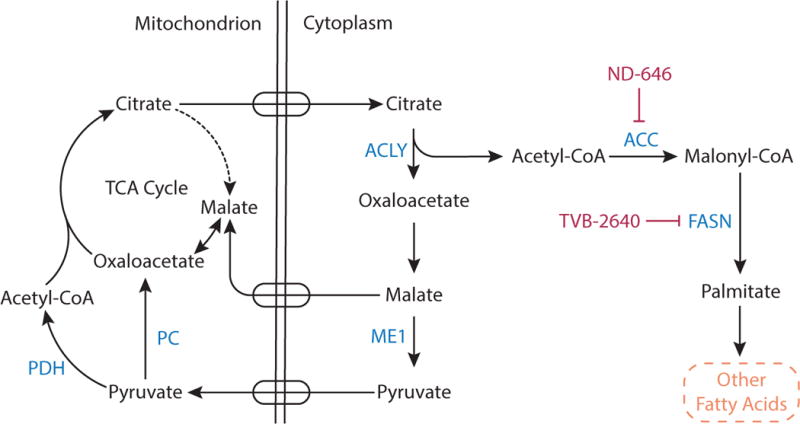Figure 9. Fatty Acid Synthesis.

Citrate is a carrier of acetyl groups from the mitochondria to the cytoplasm to support fatty acid synthesis. Mitochondrial citrate is transported into the cytosol where ATP citrate lyase (ACLY) cleaves citrate to acetyl-CoA and oxaloacetate. Oxaloacetate is converted to malate, and malate can be transported back into the mitochondrial matrix or can be converted into pyruvate in the cytoplasm by malic enzyme 1 (ME1). Cytosolic acetyl-CoA contributes to fatty acid synthesis. First, the enzyme acetyl-CoA carboxylase (ACC) catalyzes carboxylation of acetyl CoA to malonyl CoA. Fatty acid synthase (FASN) then uses malonyl-CoA to sequentially add two carbon units to a growing acyl chain and synthesize the saturated 16-carbon fatty acid palmitate, which serves as a precursor to other fatty acids. The compound ND-464 and TVB-2640 are inhibitors of ACC and FASN, respectively.
